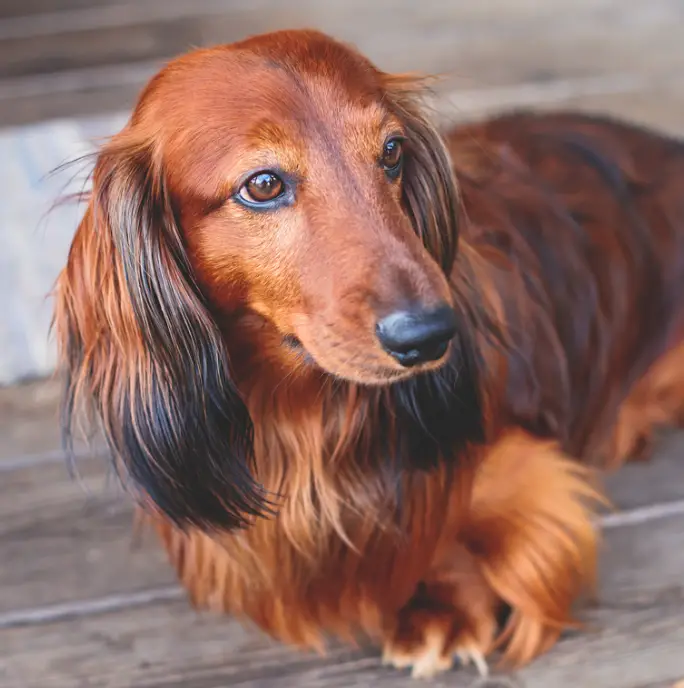As our furry friends get older, it’s important to make sure they maintain a healthy lifestyle, and this includes regular exercise. Dachshunds, in particular, can be prone to certain health issues as they age, such as back problems and obesity, which can be exacerbated by a lack of physical activity. However, exercising an older dachshund requires a bit of care and consideration to ensure their safety and comfort. In this article, we’ll explore some tips and techniques for exercising an older dachshund, so that you can help your furry friend stay healthy and happy in their golden years.
Determine their physical limitations
Before beginning any exercise routine for your older Dachshund, you must assess their physical limitations. Age, weight, and health conditions can all have an impact on your dog’s ability to exercise. Take your dog to the veterinarian for a checkup to determine their physical capabilities. Your vet can advise you on the ideal exercise routine that suits your dog’s age and health status.
Take them on short walks
Short and steady walks are an excellent way to exercise your older Dachshund. As a low-impact exercise, walking allows your dog to move around without putting pressure on their joints. Start with shorter walks of around 10-15 minutes, and gradually increase the duration to 30 minutes. Take them for a walk on a leash in a safe, enclosed area, and avoid walking them on slippery surfaces.
Consider hydrotherapy
Hydrotherapy, also known as aquatic therapy, is a great option for older Dachshunds with joint problems or arthritis. This form of therapy involves swimming or exercising in a pool or underwater treadmill, which helps to relieve pressure on your dog’s joints. Consult with your vet to recommend a professional hydrotherapy facility to ensure your dog’s safety and proper care.
Play fetch indoors
Playing fetch is another great way to exercise your older Dachshund. However, it is essential to choose games that do not strain your dog’s joints. Play fetch indoors to avoid exposing your dog to unsafe weather conditions. You can use soft, lightweight toys, and toss them around in a safe, enclosed space.
Opt for interactive toys
Interactive toys are another excellent way to exercise your older Dachshund. These toys are designed to keep your dog mentally and physically stimulated. Puzzle toys that require your dog to solve a problem to get to their treat are an excellent option. These toys can improve your dog’s cognitive skills and keep them occupied for extended periods.
Yoga and stretching
Yoga and stretching exercises can significantly benefit an older Dachshund. These low-impact exercises help to increase flexibility, reduce stiffness, and improve your dog’s balance. Simple exercises such as downward-facing dog, cobra pose, and seated spinal twist can be helpful for your dog. You can seek the advice of a veterinary physiotherapist or a qualified dog yoga instructor.
Monitor their heart rate
It is essential to monitor your dog’s heart rate during exercise. Take breaks as needed, and do not push your dog past their limits. Observe their breathing and make sure it is not too labored. Do not exercise your Dachshund during extreme weather conditions, especially high temperatures, as dogs are more prone to heatstroke.
Choose low-impact activities
Choose low-impact activities for your older Dachshund. Fetch, short walks, and interactive toys are all excellent low-impact options. Avoid high-impact activities such as jumping, running, or climbing stairs, as these exercises can put pressure on your dog’s joints.
Be patient
As your Dachshund ages, they may experience physical limitations that prevent them from participating in certain activities. Be patient and adjust their exercise routine accordingly. Pay attention to your dog’s behavior, and if they show signs of discomfort or pain during exercise, stop immediately.
Reward their efforts
Finally, reward your Dachshund for their efforts during exercise. Positive reinforcement through treats, verbal praise, and cuddles can motivate your dog and strengthen your bond with them.
Conclusion
In conclusion, exercising an older Dachshund is an important aspect of their health and wellbeing. As they age, their bodies become more vulnerable to a variety of health issues, such as obesity, joint pain, and cardiovascular problems. However, with the right approach, you can help your furry friend maintain a healthy and active lifestyle well into their golden years.
The first step in exercising an older Dachshund is to consult with your veterinarian. They can help you create a personalized exercise plan based on your dog’s health status, weight, and fitness level. It’s also important to choose low-impact exercises that won’t put too much stress on your dog’s joints, such as short walks, gentle swimming, or indoor games like hide-and-seek.
Additionally, it’s important to monitor your Dachshund’s energy levels during exercise and adjust the intensity accordingly. If your dog is showing signs of exhaustion or discomfort, it’s time to take a break and let them rest. Finally, make sure to provide plenty of fresh water and nutritious food to support your dog’s health and vitality.
By following these guidelines, you can help your older Dachshund enjoy a happy, healthy, and active lifestyle for many years to come. Remember, regular exercise is just one part of a comprehensive approach to senior dog care, so be sure to work closely with your veterinarian to provide your furry friend with the best possible care.






